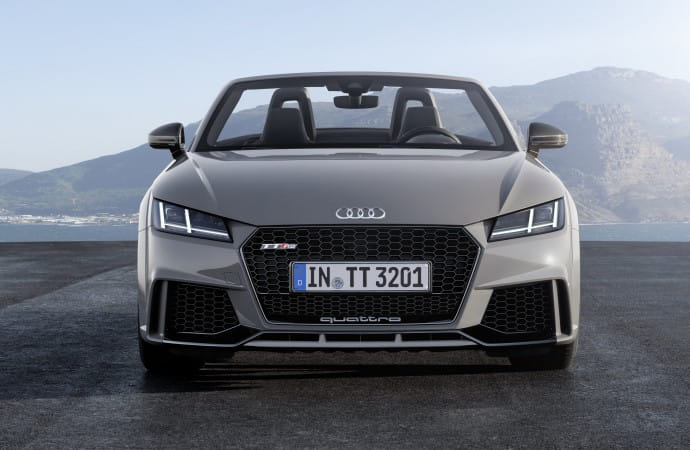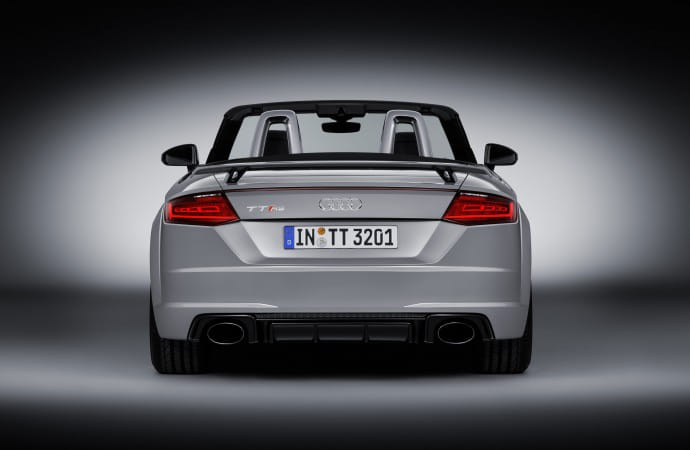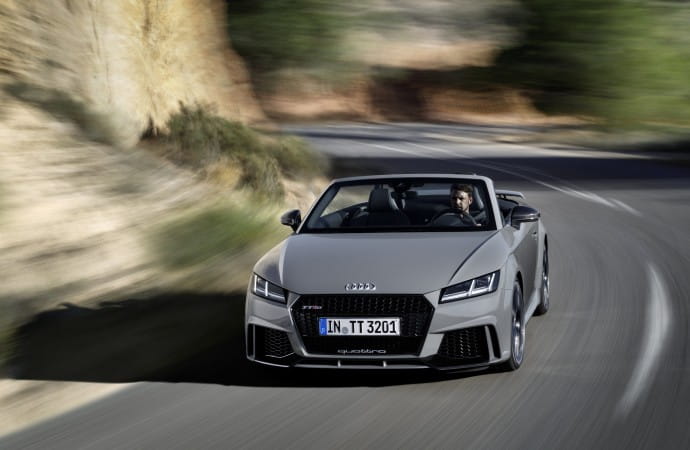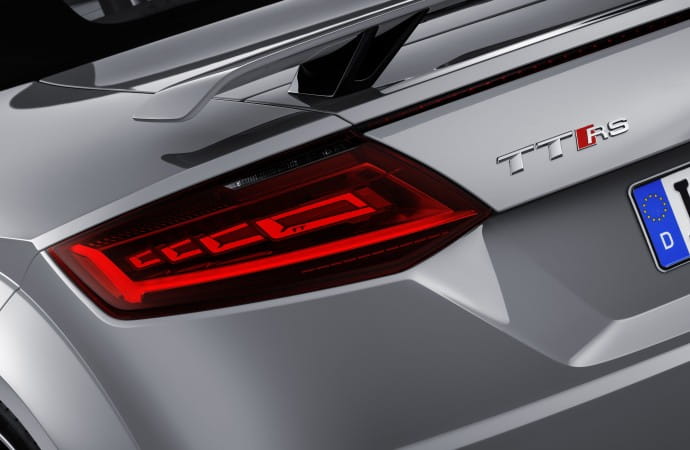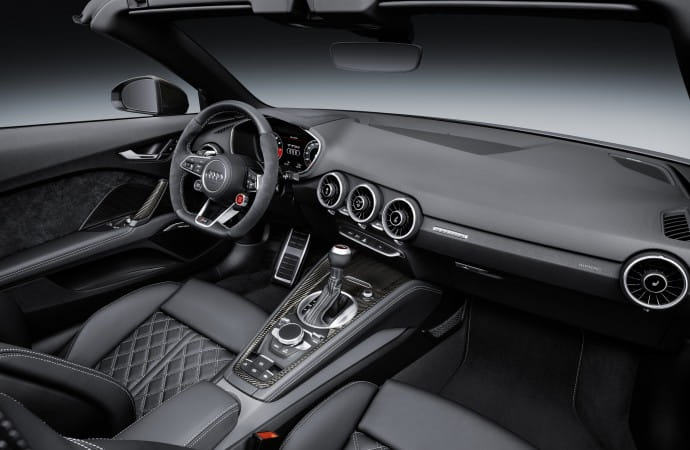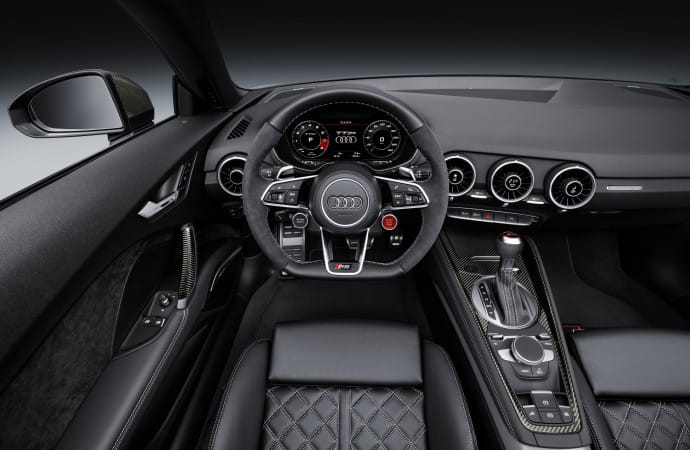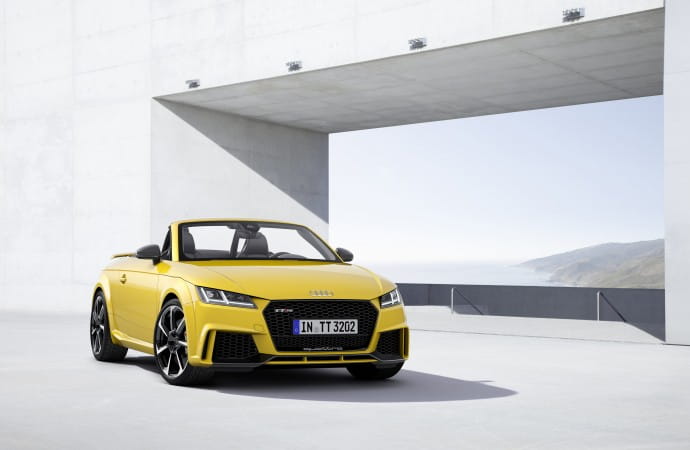Spy shots littered the internet a few months ago, prior to yesterday’s official 2017 Audi TT RS release. In those spy shots, we saw very much of the same official car. The wide fenders, aggressive “quattro” embossed grille and the signature wing capturing the true essence of what it means to be an Audi “RS” car. What was left unknown, was what lied under the hood of the test mule. Months later, it’s relieving to say that Audi has (thankfully) brought back the TT RS in a coupe and roadster body-style with it’s award-winning 2.5L TFSI 5-Cylinder engine, this time however, without the choice of a 6 speed manual.
Probably the most iconic feature of last generation’s TT RS is the screaming 5-Cylinder engine. The 5-cylinder in itself has roots tying back to Audi’s racing heritage, and its successful past. The distinct sound and limited availability in only a few Audi performance models, such as the RS3 and RSQ3 (only available in Europe), makes the 5-Cylinder a big deal for true enthusiasts. It is the perfect choice for a compact supercar, and pairs well with what Audi is trying to achieve with the TT RS.
Audi has tuned the turbo 5-Cylinder to produce 400HP, 60HP more than the previous model, and 354lb.-ft of torque. Helping to achieve these gains is a number of revisions to the engine such as lighter weight components and reduced internal friction. Paired to a 7 Speed S-tronic transmission and quattro all-wheel drive enables the TT RS to hit 100km/h in less than 4 seconds- supercar territory. Top speed is limited to 250km/h, however if one is daring enough, Audi can raise the top speed (upon request) to 280 km/h.
Superior handling is achieved in a number of ways. Using a multi-plate clutch helps distribute power freely to any of the wheels. Acting as a torque distribution system, it provides grip to the wheels that need it most in order to help the vehicle carve out corners more precisely at higher speeds. The handling characteristics can be adjusted using Audi’s signature Drive Select. A choice between 19″ or 20″ forged wheels and Carbon Ceramic brakes helps reduce weight and improve braking performance while optional Magnetic Ride control provides increased customization to driving dynamics by allowing the driver to tweak damper settings.
The design of the TT RS takes the form of a beefed up 2017 Audi TT. The RS treatment becomes apparent with larger air inlets, a redesigned honeycomb grille and quattro logo, wider body panels and the iconic TT RS fixed rear wing and two large, oval exhaust tailpipes. Optional Matrix LED’s can be added, for the first time ever, to the front and rear lights. The TT RS comes standard with LED lights all around.
The interior of the TT RS becomes more race inspired and driver focused. Controls and display are positioned towards the driver. Audi Virtual Cockpit comes standard in the TT RS and has the ability to display three different clusters. Of the three, the most relevant is a RS screen that relays all race car related information such as the rev counter, tire pressure, torque, g‑force and even a shift light for timing those perfect shifts.
Similar to the R8, the TT RS has a sport leather steering wheel with paddle shifters and race car like buttons for adjusting a number of things such as Drive Select Modes and even powering on the engine, without having to take your hands off the wheel. The driver can also adjust the exhaust flaps via a button on the dash. To dampen the full race car effect, Audi includes a number of interior amenities such as the Audi Connect suite, wireless charging and an optional MMI Navigation System.
The TT RS means serious business on the road and track. It is expected to hit Europe in the Fall of this year at a starting price of 66,400 euros for the coupe and 69,200 euros for the roadster. North America should receive the TT RS shortly after around a similar price point.

